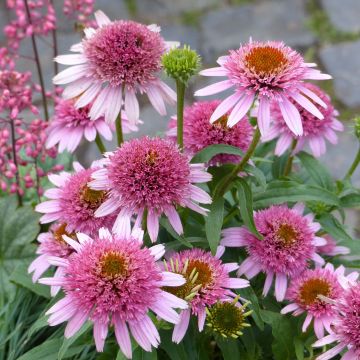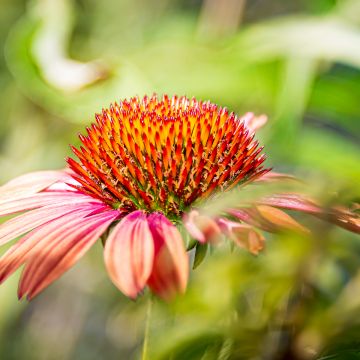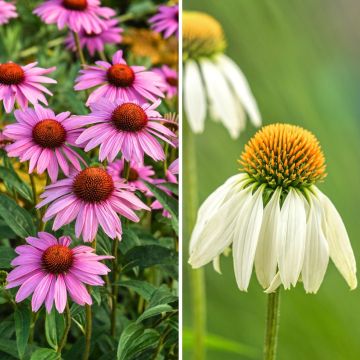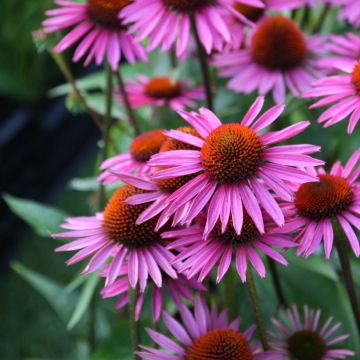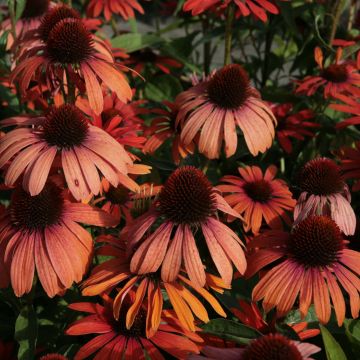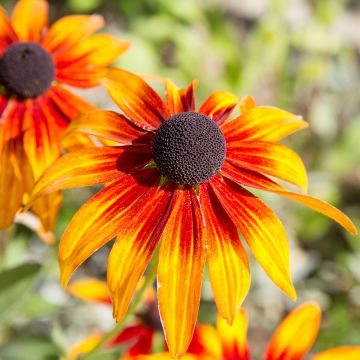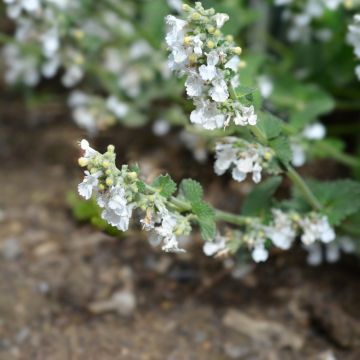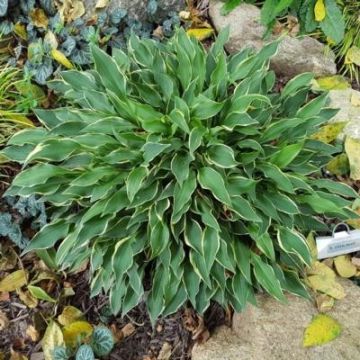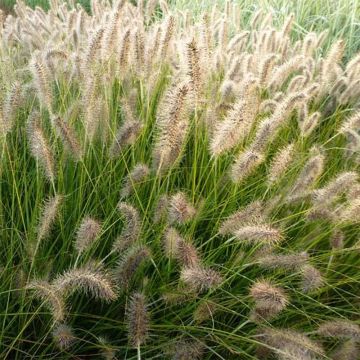

Echinacea purpurea Milkshake - Purple Coneflower


Echinacea purpurea Milkshake - Purple Coneflower


Echinacea purpurea Milkshake - Purple Coneflower


Echinacea purpurea Milkshake - Purple Coneflower


Echinacea purpurea Milkshake - Purple Coneflower


Echinacea purpurea Milkshake - Purple Coneflower


Echinacea purpurea Milkshake - Purple Coneflower


Echinacea purpurea Milkshake - Purple Coneflower


Echinacea purpurea Milkshake - Purple Coneflower
Echinacea purpurea Milkshake - Purple Coneflower
Echinacea purpurea Milkshake
Purple Coneflower, Eastern Purple Coneflower
Well prepared package, received on the agreed date, the young plants are promising. In short, Perfect as usual!
maud, 28/03/2022
Special offer!
Receive a €20 voucher for any order over €90 (excluding delivery costs, credit notes, and plastic-free options)!
1- Add your favorite plants to your cart.
2- Once you have reached €90, confirm your order (you can even choose the delivery date!).
3- As soon as your order is shipped, you will receive an email containing your voucher code, valid for 3 months (90 days).
Your voucher is unique and can only be used once, for any order with a minimum value of €20, excluding delivery costs.
Can be combined with other current offers, non-divisible and non-refundable.
Home or relay delivery (depending on size and destination)
Schedule delivery date,
and select date in basket
This plant carries a 12 months recovery warranty
More information
We guarantee the quality of our plants for a full growing cycle, and will replace at our expense any plant that fails to recover under normal climatic and planting conditions.

Would this plant suit my garden?
Set up your Plantfit profile →
Description
Echinacea purpurea 'Milkshake' is a new medium sized variety that combines floribundity and the charm of pastel colours. Its flowers, which never seem to fade, are large pompons that range from yellow-orange to white, with all shades between these two tones blending on the plant in full bloom. Vigorous, resistant and flowering from summer to autumn, it is a generous and undemanding perennial plant, useful to birds and pollinating insects and very long-lasting in a vase: it has a place in a natural or romantic garden.
Originally from the Western United States, from Georgia to Michigan through Oklahoma and Ohio, Echinacea purpurea is a perennial with a strong character which confidently colonizes rocky prairies, savannas, light undergrowth and road edges in its natural habitat. It is a deciduous perennial plant whose vegetation dries up in winter.
Echinacea 'Milkshake' was recently obtained in the United States. The vigorous and well-branched plant, has a bushy tufted habit, 70 cm (28in) high and 50-60 cm (20-24in) wide. On its upright, rigid, rough stems, there are opposite, lanceolate, green leaves with rough hairs. Flowering extends from July to October, accompanying all the summer flowers and loved by butterflies. Each mature plant can bear between 40-50 flowers simultaneously. The branches each end in a solitary flower head formed by a centre filled with small, very double petals, surrounded by a row of much larger, slightly drooping ligulate petals. The centre of the flower is yellow when it blooms and becomes white when mature. The fruit of the echinacea is an achene that releases seeds that birds are fond of. This plant firmly and deeply anchors itself in the soil, with the help of its well-developed root system. Once well rooted, it tolerates dry periods well.
Echinacea 'Milkshake', with its refined long-lasting flowering, will bring charm to sunny beds and large borders. Really easy to grow in ordinary soil, it grows very well in flower beds and pots. It mixes well with other echinaceas (Eccentric, Green Jewel) as well as with small daisies ('Engelina', 'Princesse d'argent'), Echinops, summer asters in pastel colours. Lighten the scene by mixing in some ornamental grasses like Stipa tenuifolia, Muhlenbergia capillaris, Pennisetum orientale Karley Rose... Splendid in flower beds, the beautiful flowers of the purple 'Milkshake' echinacea are also very beautiful in fresh or dried flower bouquets.
Properties: In homoeopathy, its root is used to fight colds and strengthen the immune system. These properties were first used by Native Americans. The name Echinacea comes from the Greek echinos which means "hairy or like a hedgehog" and acea for "having the shape of", alluding to the hearts of the flowers. Purpurea means "purple".
Report an error about the product description
Echinacea purpurea Milkshake - Purple Coneflower in pictures




Flowering
Foliage
Plant habit
Botanical data
Echinacea
purpurea
Milkshake
Asteraceae
Purple Coneflower, Eastern Purple Coneflower
Cultivar or hybrid
Other Echinacea - Coneflower
View all →Planting and care
Echinacea purpurea Milkshake takes time to establish as its growth is rather slow. But once in place, it requires no particular care and is very resistant to pests and diseases. It is best planted in spring, in a sunny location, in a mix of compost and garden soil. The soil must be deep and loose to accommodate its root system. Mulch the base in May to keep it cool in summer and support its flowering. Remove faded flowers as they appear. While it tolerates dry soils once established, it dislikes a lack of water during flowering.
Planting period
Intended location
Care
-
, onOrder confirmed
Reply from on Promesse de fleurs
Similar products
Haven't found what you were looking for?
Hardiness is the lowest winter temperature a plant can endure without suffering serious damage or even dying. However, hardiness is affected by location (a sheltered area, such as a patio), protection (winter cover) and soil type (hardiness is improved by well-drained soil).

Photo Sharing Terms & Conditions
In order to encourage gardeners to interact and share their experiences, Promesse de fleurs offers various media enabling content to be uploaded onto its Site - in particular via the ‘Photo sharing’ module.
The User agrees to refrain from:
- Posting any content that is illegal, prejudicial, insulting, racist, inciteful to hatred, revisionist, contrary to public decency, that infringes on privacy or on the privacy rights of third parties, in particular the publicity rights of persons and goods, intellectual property rights, or the right to privacy.
- Submitting content on behalf of a third party;
- Impersonate the identity of a third party and/or publish any personal information about a third party;
In general, the User undertakes to refrain from any unethical behaviour.
All Content (in particular text, comments, files, images, photos, videos, creative works, etc.), which may be subject to property or intellectual property rights, image or other private rights, shall remain the property of the User, subject to the limited rights granted by the terms of the licence granted by Promesse de fleurs as stated below. Users are at liberty to publish or not to publish such Content on the Site, notably via the ‘Photo Sharing’ facility, and accept that this Content shall be made public and freely accessible, notably on the Internet.
Users further acknowledge, undertake to have ,and guarantee that they hold all necessary rights and permissions to publish such material on the Site, in particular with regard to the legislation in force pertaining to any privacy, property, intellectual property, image, or contractual rights, or rights of any other nature. By publishing such Content on the Site, Users acknowledge accepting full liability as publishers of the Content within the meaning of the law, and grant Promesse de fleurs, free of charge, an inclusive, worldwide licence for the said Content for the entire duration of its publication, including all reproduction, representation, up/downloading, displaying, performing, transmission, and storage rights.
Users also grant permission for their name to be linked to the Content and accept that this link may not always be made available.
By engaging in posting material, Users consent to their Content becoming automatically accessible on the Internet, in particular on other sites and/or blogs and/or web pages of the Promesse de fleurs site, including in particular social pages and the Promesse de fleurs catalogue.
Users may secure the removal of entrusted content free of charge by issuing a simple request via our contact form.
The flowering period indicated on our website applies to countries and regions located in USDA zone 8 (France, the United Kingdom, Ireland, the Netherlands, etc.)
It will vary according to where you live:
- In zones 9 to 10 (Italy, Spain, Greece, etc.), flowering will occur about 2 to 4 weeks earlier.
- In zones 6 to 7 (Germany, Poland, Slovenia, and lower mountainous regions), flowering will be delayed by 2 to 3 weeks.
- In zone 5 (Central Europe, Scandinavia), blooming will be delayed by 3 to 5 weeks.
In temperate climates, pruning of spring-flowering shrubs (forsythia, spireas, etc.) should be done just after flowering.
Pruning of summer-flowering shrubs (Indian Lilac, Perovskia, etc.) can be done in winter or spring.
In cold regions as well as with frost-sensitive plants, avoid pruning too early when severe frosts may still occur.
The planting period indicated on our website applies to countries and regions located in USDA zone 8 (France, United Kingdom, Ireland, Netherlands).
It will vary according to where you live:
- In Mediterranean zones (Marseille, Madrid, Milan, etc.), autumn and winter are the best planting periods.
- In continental zones (Strasbourg, Munich, Vienna, etc.), delay planting by 2 to 3 weeks in spring and bring it forward by 2 to 4 weeks in autumn.
- In mountainous regions (the Alps, Pyrenees, Carpathians, etc.), it is best to plant in late spring (May-June) or late summer (August-September).
The harvesting period indicated on our website applies to countries and regions in USDA zone 8 (France, England, Ireland, the Netherlands).
In colder areas (Scandinavia, Poland, Austria...) fruit and vegetable harvests are likely to be delayed by 3-4 weeks.
In warmer areas (Italy, Spain, Greece, etc.), harvesting will probably take place earlier, depending on weather conditions.
The sowing periods indicated on our website apply to countries and regions within USDA Zone 8 (France, UK, Ireland, Netherlands).
In colder areas (Scandinavia, Poland, Austria...), delay any outdoor sowing by 3-4 weeks, or sow under glass.
In warmer climes (Italy, Spain, Greece, etc.), bring outdoor sowing forward by a few weeks.































